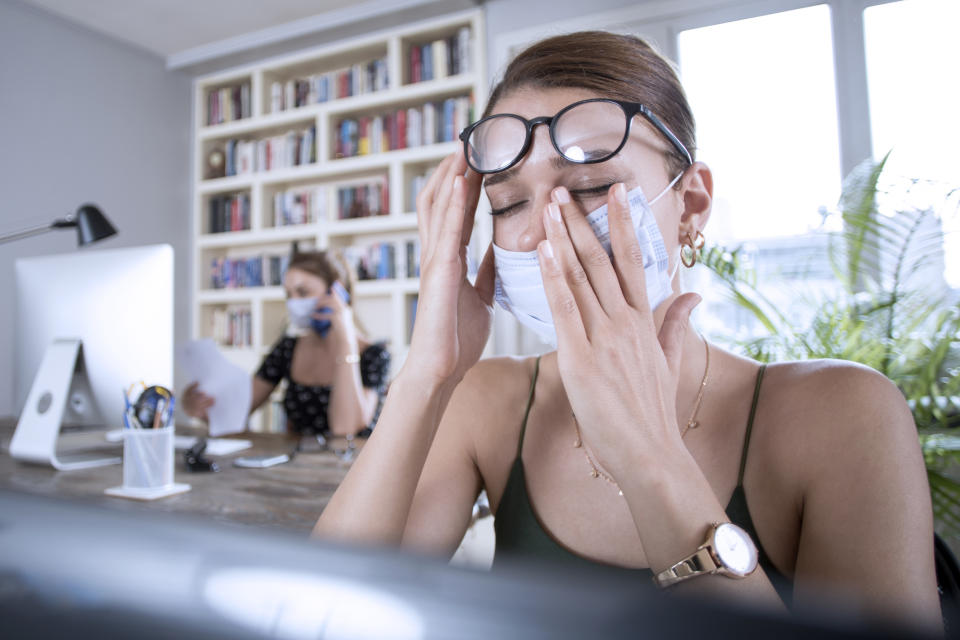What is 'mask eye' and how can you prevent it?

If you’ve noticed that your eyes are feeling a little uncomfortable lately, you’re not alone: More than one in five people are struggling to maintain healthy eyes while wearing face coverings to reduce the spread of coronavirus, according to optometrists.
One of the issues people are struggling with is ‘dry eye’, which can cause irritation, according to research released by the College of Optometrists to mark National Eye Health Week.
We know that wearing a face mask is a vital aspect in helping to reduce the spread of COVID-19, but we’re still getting used to some of the not-so-pleasant side effects of frequently donning a covering.
So far we’ve learnt how to handle the dreaded ‘maskne’, what to do to reverse ‘Covid Face’ and how to deal with your face mask fogging up your glasses.
Now experts are helping us learn how to navigate mask eye.
A report published in the journal Ophthalmology and Therapy back in July details how there has been an increase in cases of eye irritation and dry eye among people who regularly wear face masks.
Watch: How to make your own face mask
Read more: The face mask hacks you need to know
What is ‘mask eye’?
Before we get into the nitty gritty (literally in some cases) of ‘mask eye’, it is important to point out that the annoyance of having to deal with this face mask-related irritant doesn’t in any way outweigh the benefits of wearing one.
But it is useful to know what it is and how to deal with it.
“Many of us are finding that our eyes are paying the price for us wearing a face mask every day,” says Dr Sally Ameen, consultant eye surgeon at Ophthalmic Consultants of London.
“If you wear glasses, you may find yourself seeing the world through the fog of misted up lenses – as the moisture from your exhaled breath condenses on the glass.
“But your breath can also cause problems for your eyes themselves.”
Dr Ameen explains that as your breath blows across the surface of the eye, it can disrupt the tear film – which is the thin layer of lubricant on your eyeball.
“If this film gets dry, your eyelid can scratch your eyeball as it opens and closes, causing soreness and prompting your eye to respond by watering,” she says.
“Your breath will also contain naturally occurring bacteria.
“While this isn’t a problem if your eyes are healthy, it can be an issue if you have an existing eye condition or have recently had eye surgery.”
Read more: Why you should think twice before using a disposable face mask

Read more: People warned to snip straps off disposable masks after charity frees hundreds of animals
So what can you do to combat mask eye?
If you find your eyes feeling dry and irritated after wearing a face mask, the best way to deal with it is to use over-the-counter eye drops.
“Preservative-free ones are best, and they are not expensive,” Dr Ameen explains. “A few drops will help stabilise the tear film, soothing the irritation and reducing the redness.”
Making sure your mask fits correctly and in the right position is another potential solution.
“Ordinarily when you breathe out, either through your nose or mouth, the air is taken down and away from your eyes,” says Dr Ameen.
“The problem with face masks is that they can divert the air up towards your eyes – so the best fix is to tape the top of the mask to the bridge of your nose.
“By using surgical tape to gently seal the top of the mask to your skin, you’ll force your breath out the side of the mask and safely away from your eyes.”




